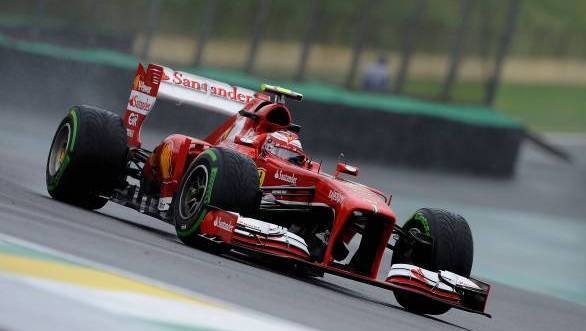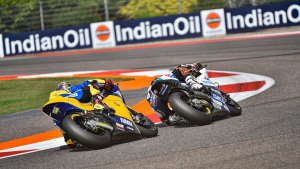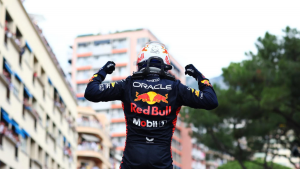Ferrari reveals new engine for the 2014 Formula 1 season
Ferrari has revealed the engine for its 2014 Formula 1 car. Called the 059/3, the new power unit, built to meet the new F1 norms, is a turbocharged, 1.6-liter V6 which is further boosted by an energy recovery system (ERS) that is twice as powerful as before.

The 2013 Kinetic Energy Recovery System (KERS) made 80PS of power and could run the race car for six seconds and reduce the lap time by about 0.3 seconds. The new ERS is good for 160PS, powers the car for 30 seconds on full batteries and, according to Ferrari, can shave a whopping three seconds per lap. You will find the engine and its details in the video below.
[youtube=http://www.youtube.com/watch?v=qLcbF2uI05s&w=586&h=335]
The new engine is an outcome of new F1 regulations. Click here to read all about that. As a result, the three engine makers in the competition ? Ferrari, Mercedes and Renault ? have had to build entirely new engines.
In recent years, the incumbent naturally aspirated V8 engines have shown remarkable resilience in testing F1 conditions, and cases of engine breakdowns on the racetrack have been few and far between.
But this is all set to change next year. With F1 teams getting a short space of time to develop such complex powertrains, their reliability is likely to come under intense scrutiny next season.
Ferrari didn't provide an audio sample of the power unit at its introduction, but a brief video taken at Fiorano has led to rumours that the team has been testing the engine in a revised LaFerrari chassis. The following video clip shows a camouflaged LaFerrari fitted with a roof intake and sounding nothing at all like a V12 as it takes the hairpin and powers onto the straight.
[youtube=http://www.youtube.com/watch?v=od3H6Jxisfk&w=586&h=335]
Ferrari's new F1 engine - press release
| 2014: a new era for the F1 engine Maranello, 1st July The expression "don't wish your life away" just cannot be upheld in Formula 1, because long before one year is over, before one car has been fully developed, it's time to think of the following year. It has always been the case that the next year's car design work starts in the early part of the current year, with some teams running two completely different design teams, one for the even numbered years and the other for the odd. Now, in July 2013, the following year has never seemed such a short time away, because of the incredibly significant changes to the technical regulations. Instead of the current 2.4 litre naturally aspirated V8s, next year the engines will be 1.6 litre turbocharged with an energy recovery system built in. The energy recovery system will be powered off the exhaust and will deliver around an extra 160 horsepower for over 30 seconds each lap. The engines will have a rev limit of 15000 rpm and have to last for around 5000 kilometres as opposed to the current 2000. Added to significant changes on other areas of the car, it all goes to make for the biggest changes the sport has seen in decades. On hand in the Silverstone paddock, on the Friday of the British Grand Prix, to discuss the engine aspect with the media was Scuderia Ferrari's Head of Engines, Luca Marmorini. "There is no one single aspect of the new project that is more critical than the next," began the engineer. "I'd say it's difficult in all 360 degrees. For example, the turbo is a new type which runs to 25,000 rpm and is definitely something absolutely new. Also the very complex electronics and management systems are a very big step forward, which means that engine management will be a very difficult challenge." In the past, when racing at tracks that put the engines under a lot of pressure, it was customary for several drivers to retire with engine failure, but in recent times, we have almost taken for granted a level of reliability that is exceptional for a racing engine. That is down to the fact that current F1 engines have barely changed in the past few years, but next year, will be a different story. "We have to develop the power train in a short space of time and this means that reliability will be the factor that will decide the races in the early part of the season," reckoned Marmorini. "In most cases people will locate their turbos in the central rear part of the engine and therefore near the electronics and the temperatures can reach a thousand degrees and that won't be an easy matter to deal with. Managing temperatures will be one of the main areas we will have to work on." Testing on the bench has been going on for some time now. "We already had a prototype running on the test bench towards the end of last year, while we are completing the one that will run in the actual car at the moment," revealed Marmorini. "We have a very challenging plan to be ready in March. We can't afford any hiccough today and I am confident that we will be ready. We have been working for some time to have this car ready but it's a challenging task. Only at the first race next year will we see if we have done a good job." Another regulation that is exercising the minds of the scientists is that the fuel flow of these new power units must not exceed 100 kilos per hour and there are concerns this could mark a return to drivers having to save fuel rather than race. "Ferrari feels this could be a danger," admitted Marmorini. "We like Formula 1 to consider efficiency, but we don't like Formula 1 to be a sport where you are cruising for 50% of the laps." At the moment, engine development is frozen but with the brand new 2014 project, there has to be a thaw. "With a completely new power unit, some sort of development from the first to the second year has to be done," continued Ferrari's engine man. "The amount of modifications you can do will reduce each year, from a fair amount of modifications for the first year and then in the second and third years, the number of modifications will be reduced. By the third and fourth years we will come to a situation which is very similar to what we have right now." No discussion about an F1 engine can be complete without talking about horsepower, so Marmorini did just that. "When we defined these regulations with the FIA the idea was to have very similar horsepower to what we have today. A current F1 engine has around 750 horsepower, and you have 80 horsepower more from the KERS. Next year, with an engine having somewhere between 600 and 650 horsepower and an additional 160 horsepower coming from the ERS, if you add the two it's very similar to what you have today. Next year, whoever can handle the engine in a good way and be reliable will have good results. But it will be difficult to run the season without issues, considering we are talking about four to five thousand kilometres per unit which is almost double what we are doing right now." NEW SHELL FUEL AND LUBRICANT FOR SCUDERIA FERRARI 2014 FORMULA ONE ENGINE 18/12/2013 - Shell announces today that Scuderia Ferrari's new V6 Formula One engine will contest the 2014 season with an entirely new suite of bespoke fuels and lubricants. To complement the new Ferrari engine, unveiled today in Maranello, Italy, Technical Partner Shell has developed a range of fuels, lubricants and fluids for the 2014 project. This latest step in Shell's long-standing partnership with Ferrari has seen the pair tackle their most recent technical challenge with gusto. Since the start of the 2014 project, Shell has blended more than 50 versions of the Shell V-Power racing fuel for bench testing, with the final few candidates currently undergoing the final stages of evaluation ahead of the first track sessions of 2014. Speaking about the 2014 changes, Andrew Foulds, Shell Vice President Fuels Technology, commented: "FIA fuel and oil technical regulations remain unchanged in 2014, but the new engine's appetite and power band is radically different from its predecessor, which has allowed us the freedom to explore and innovate in new areas. Of equal relevance to us as the change in engine configuration is the limit to the amount of fuel that can be used in each race. Finding a fuel that offers power and efficiency is of course the holy grail. Our development process has been on-going for a long time now and we are delighted with the performance gains and efficiency we have been able to find in the evolution of the fuel blends alone." The 2014 lubricant is also different from previous formulations. Andrew continues: "Not only are we faced with a brand new engine and powertrain configuration in 2014 with the addition of a turbo, but also the power unit lifespan has been increased. With only five engines available to each driver each season there is a fine line between how hard we can push for performance whilst maintaining the reliability of which Shell is so proud. The Shell Helix Ultra formulations we are developing with Ferrari are pushing these boundaries and yielding vital information that will be exploited through our continual development activity for both racing and road applications." The V6 engine introduction heralds a new era in Formula One with all engine manufacturers adapting to new regulations with smaller V6 1.6 litre turbocharged engines replacing the established V8 2.4 litre power unit. Richard Bracewell, Shell Global Sponsorships Manager, speaking at the event said, "A challenge of this magnitude is what we live for. This is not the first time Shell has worked together with Ferrari to meet new technical regulations in Formula One and I'm sure it will not be the last. Shell has been developing products in Formula One since 1950 and in that time has won over 160 races with Ferrari in a wide variety of engines. It is the strength of this Technical Partnership that allows us to continually develop fuels and lubricants ensuring that any technological advantage developed for Ferrari is passed directly through to the motorist." | |
Related Stories
Top Stories
Latest Videos
Most Popular
- Budget Sportbike Showdown: Kawasaki Ninja 500 vs Aprilia RS 457 vs Yamaha YZF-R3
- 2014 Triumph Daytona 675 vs 2024 Kawasaki ZX6R - A Decade of Evolution in Supersport Motorcycles
- Mumbai-Pune Expressway speed restrictions updated
- 2024 Hyundai Creta vs Toyota Urban Cruiser Hyryder vs Skoda Kushaq comparison review - the hype is real?
- Nissan Magnite EZ-Shift review - is the AMT any good?














